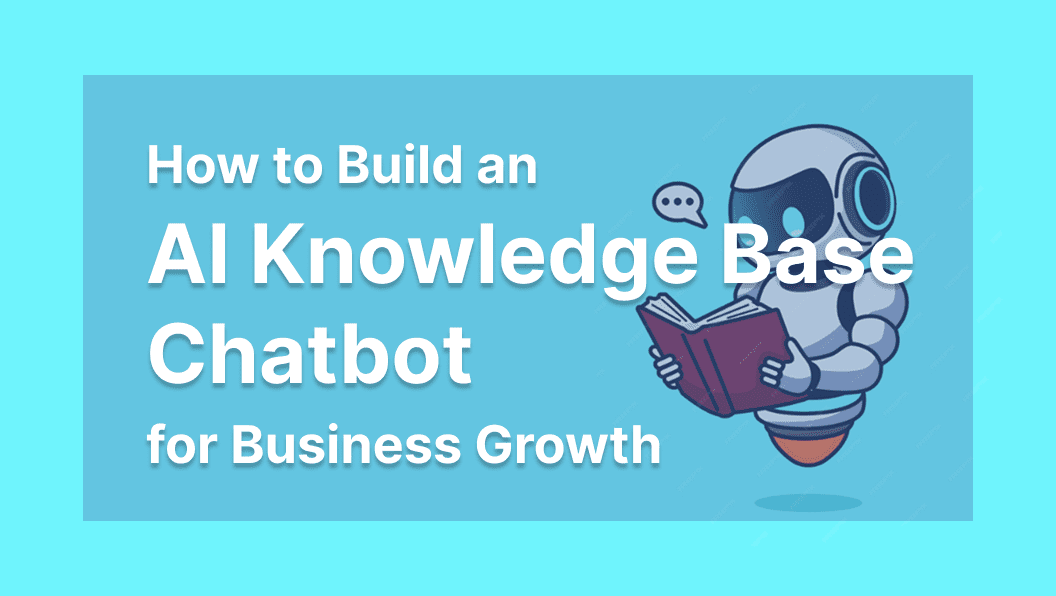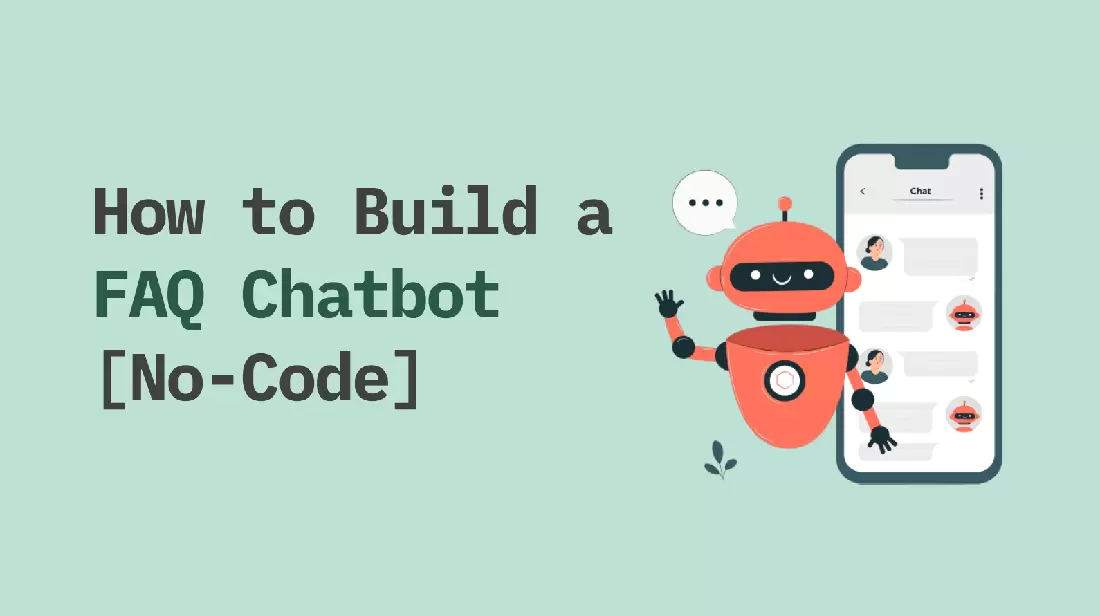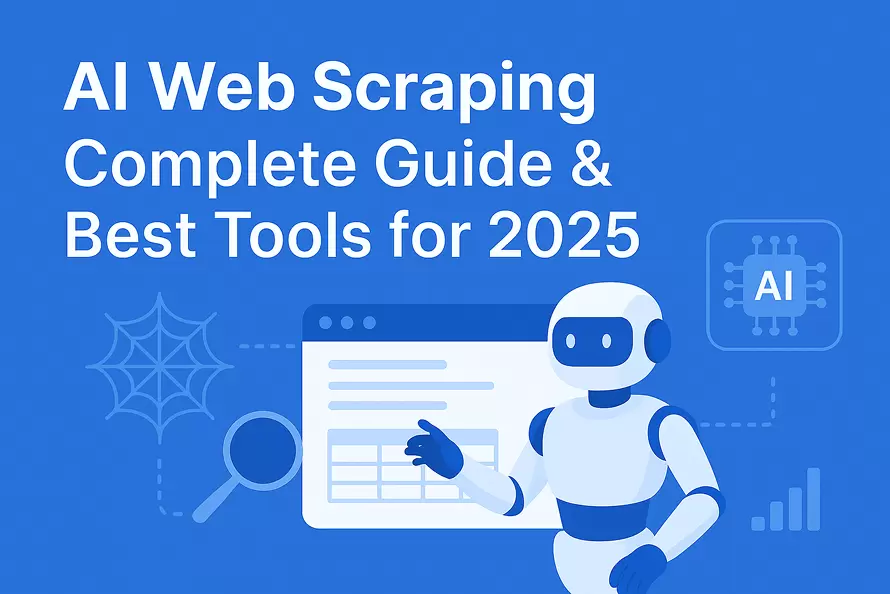The journey of enterprise digital transformation has now shifted to AI-powered automation and workflow orchestration. Every enterprise is working to automate operations and build smart AI-backed applications.
AI-powered automation has become a necessity, but there is an overwhelming number of platforms to choose from. This even lets enterprises struggle with multiple APIs for different purposes. That's where Dify, n8n, and GPTBots step in.
Each offers a distinct approach to building intelligent applications and automating business processes:
- Dify is a developer-centric agentic AI development platform, focused on building and extending AI agents and RAG pipelines with a no-code/low-code framework.
- n8n is an open-source low-code workflow automation tool favored by developers and IT teams for its 400+ integrations.
- GPTBots focuses on building enterprise AI agents that feature retrieval-augmented generation (RAG), context engineering, and multi-LLM collaboration, all with a no-code, user-friendly interface.
In today's guide, we will discuss the key differences, strengths, and use cases of Dify vs n8n vs GPTBots. By the end, you would be in a better position to select the best solution for AI-powered workflow automation and agent-driven business transformation in 2025.
n8n vs Dify Comparison: The Key Differences
n8n and Dify both position themselves as all-in-one platforms for intelligent automation. However, their development/deployment approaches and their target users are quite different. Let's now highlight the key Dify vs n8n differences:
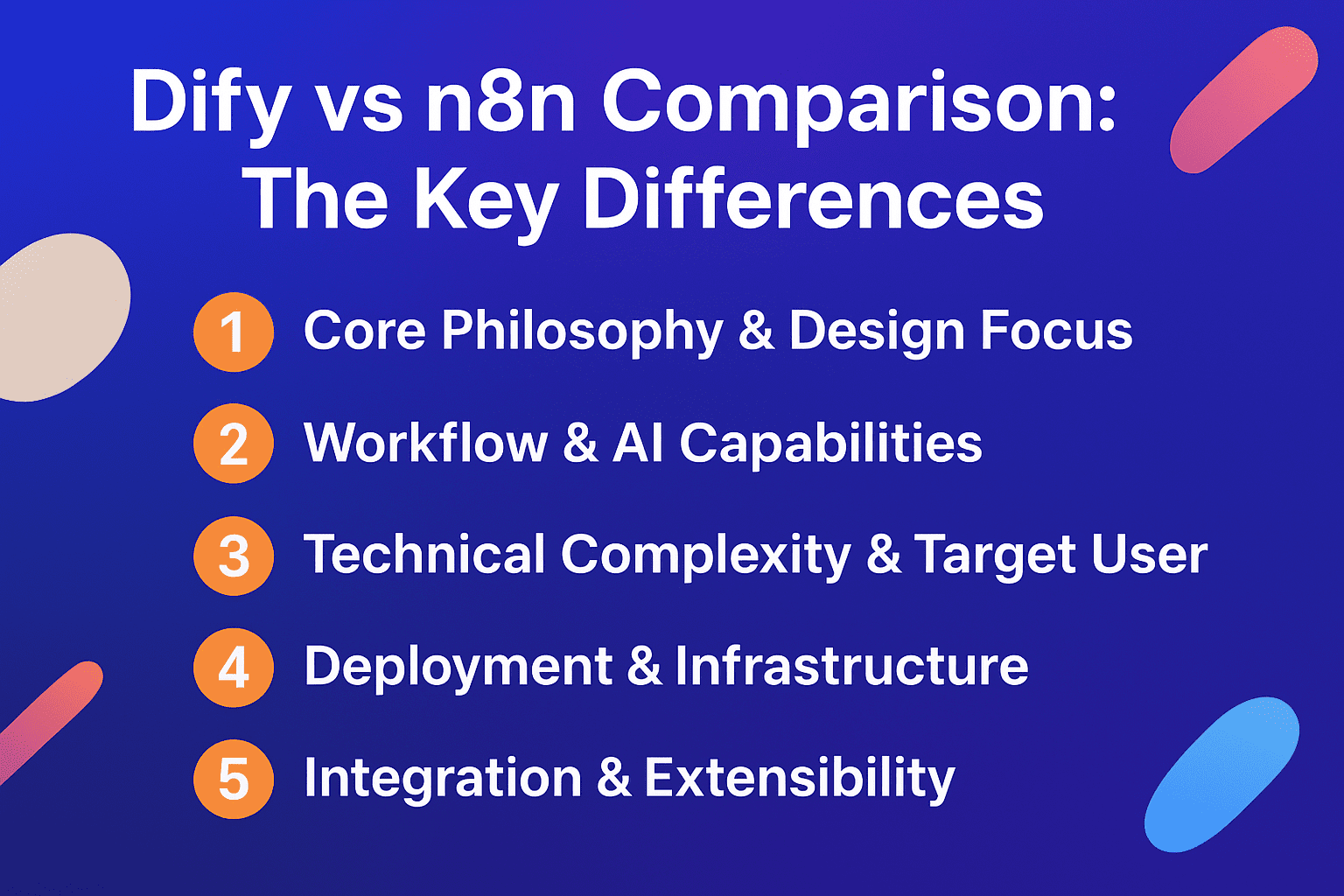
1. Core Philosophy & Design Focus
n8n operates as a general-purpose, open-source workflow automation tool. It uses a node-based editor to connect applications, APIs, and services for IT and data automation.
Dify is an AI-native application development platform. It provides specialized tools for building, evaluating, and deploying LLM-powered applications with minimal coding.
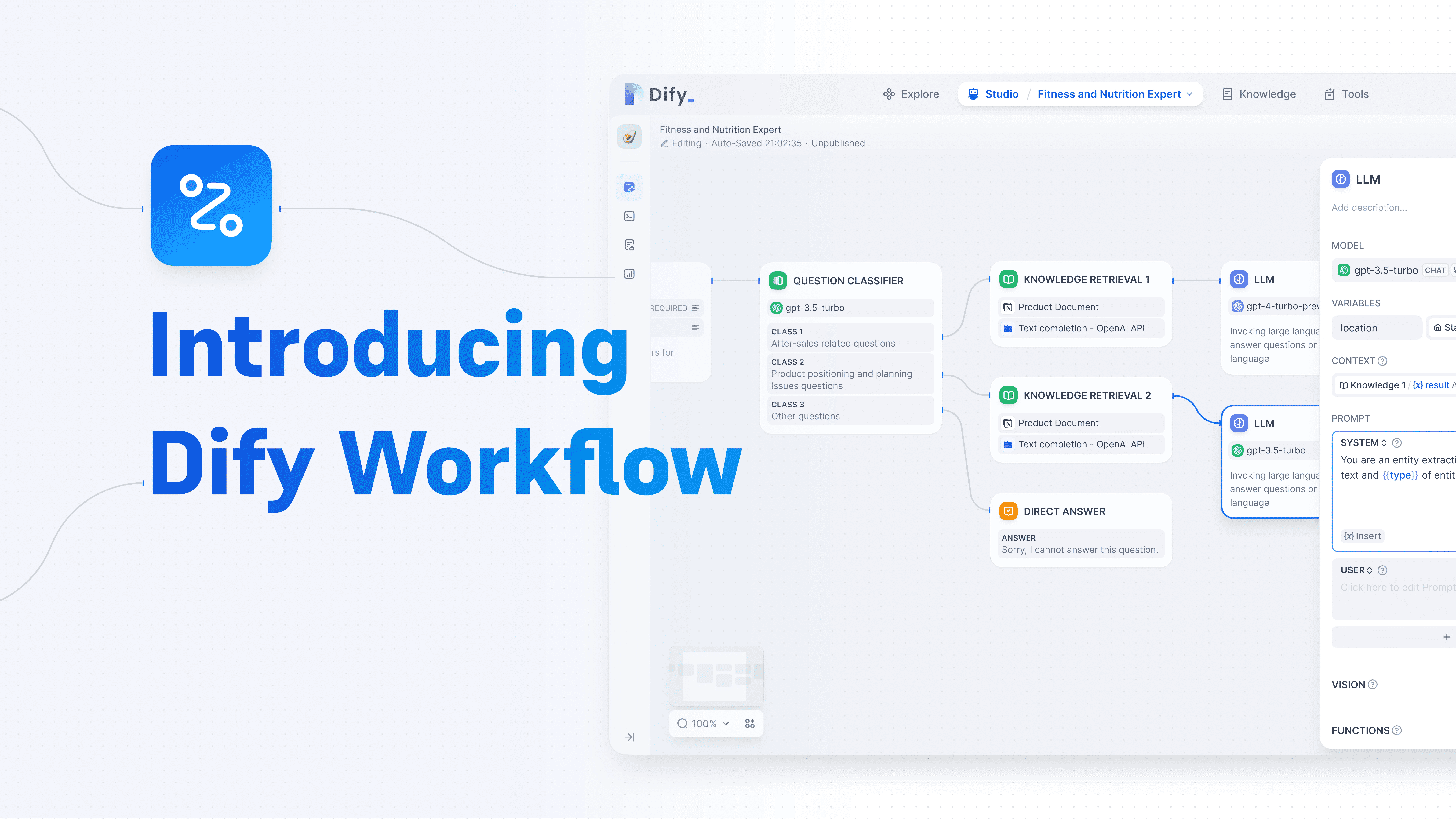
Verdict: n8n is built for traditional automation workflows and broad system integration, while Dify is engineered specifically for AI application development.
2. Workflow & AI Capabilities
n8n dominates in business process automation with over 400 pre-built integrations. It offers various trigger types, including manual, scheduled, webhook, form submissions, and more. It implements AI through third-party nodes (such as OpenAI) rather than as a native core feature.
Dify provides AI-centric workflows with native support for multiple LLMs, built-in RAG, prompt engineering, and evaluation tools designed for creating conversational AI experiences. However, its workflow features are somewhat limited in comparison, with fewer trigger options.
Verdict: n8n vs Dify workflow automation comparison shows that the former adds AI to automation workflows, whereas the latter bakes AI capabilities directly into its core development environment.
3. Technical Complexity & Target User
n8n is a low-code platform that provides both a visual drag-and-drop interface to build workflows and the support to embed custom code to extend functionality. However, it often requires technical knowledge for complex API integrations and JSON handling, which makes it best-suited for automation engineers and developers.
Dify follows a low-code/no-code approach with intuitive drag-and-drop interfaces. It simplifies the creation of AI agents and workflows for business users and startup teams with less coding expertise.
Verdict: n8n is best for technical users, while Dify empowers less technical users to build AI apps.
4. Deployment & Infrastructure
n8n offers flexible deployment, including self-hosted options for on-premises or private cloud environments. This appeals to organizations with strict data control and compliance needs.
Dify is cloud-focused with some self-hosted options. It is optimized for scalable AI application deployment and managed infrastructure.
Verdict: Choose n8n for self-hosted control and Dify for managed and scalable AI deployment.
5. Integration & Extensibility
n8n boasts an extensive ecosystem with native support for over 400 applications (CRM, ERP, databases). It allows connection to almost any tool with an API.
Dify offers more AI-focused integrations, with strong capabilities for connecting to knowledge bases and model APIs rather than general business applications.
Verdict: n8n is superior for extensive business application integration, while Dify is stronger in AI and data source connections.
n8n vs GPTBots: The Key Differences
Now that we have looked into the n8n vs Dify comparison, let's shift our focus to the n8n vs GPTBots comparison. Both these tools enable enterprise automation with AI, but there are clear differences in their approaches and areas of strength.
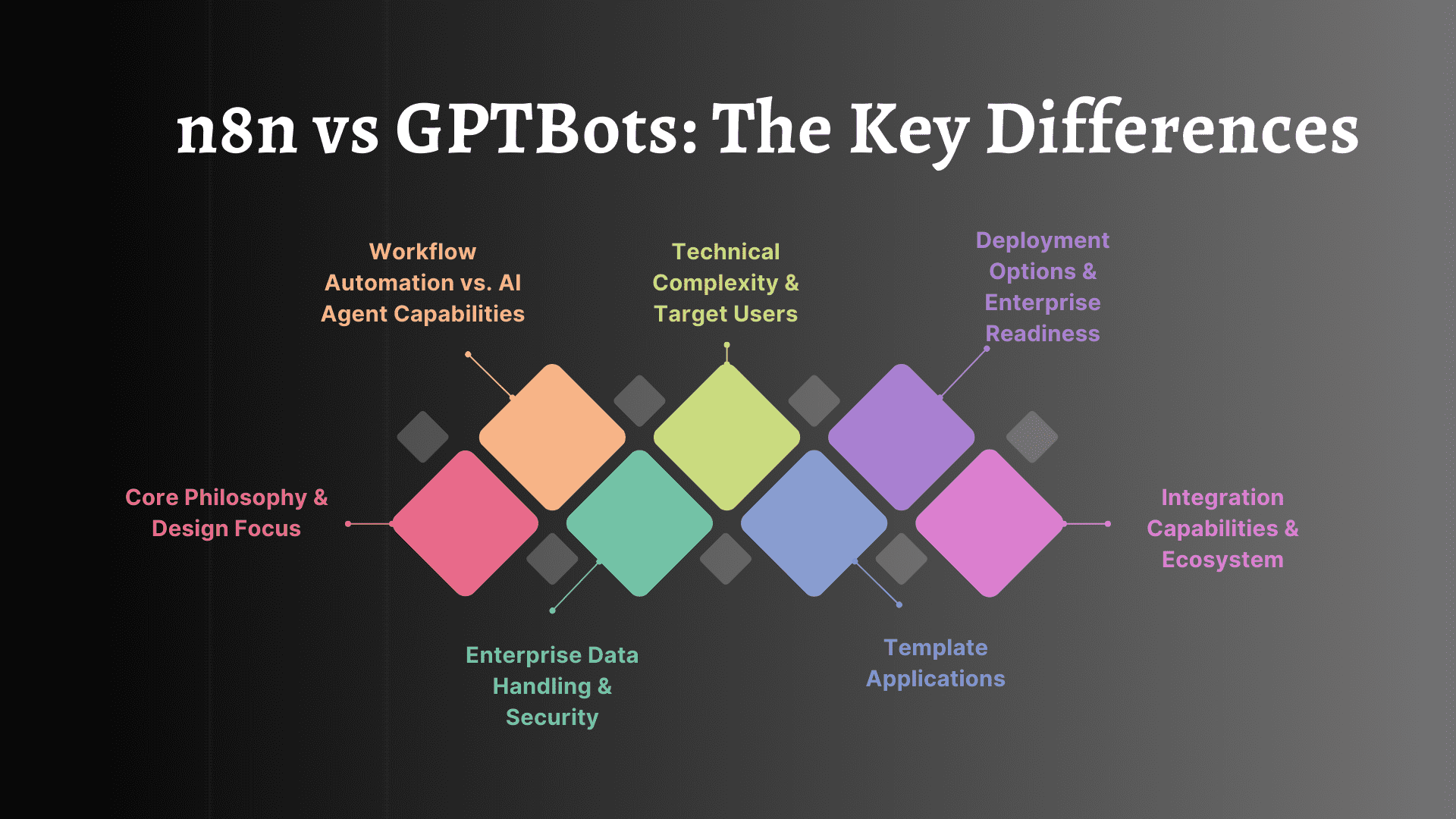
1. Product Philosophy & design Focus
n8n is a low-code, open-source workflow automation platform focused on orchestrating integrations among hundreds of applications and enterprise systems. It empowers developers to build powerful and customizable workflow processes connecting diverse tools.
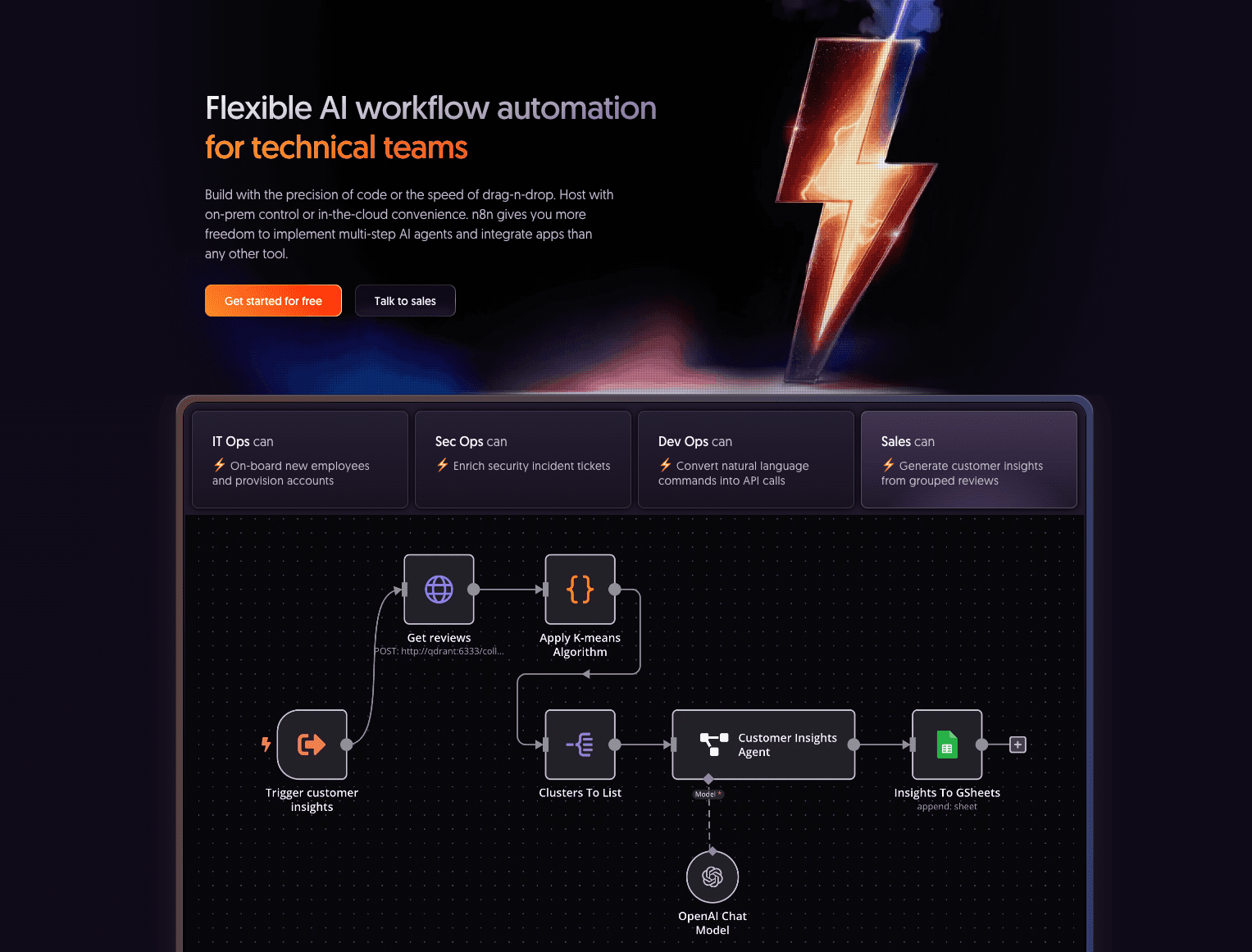
GPTBots is a no-code enterprise AI Agent platform designed specifically for building intelligent conversational agents. It prioritizes advanced AI engineering features such as retrieval-augmented generation (RAG), context engineering, and multi-LLM collaboration at its core.
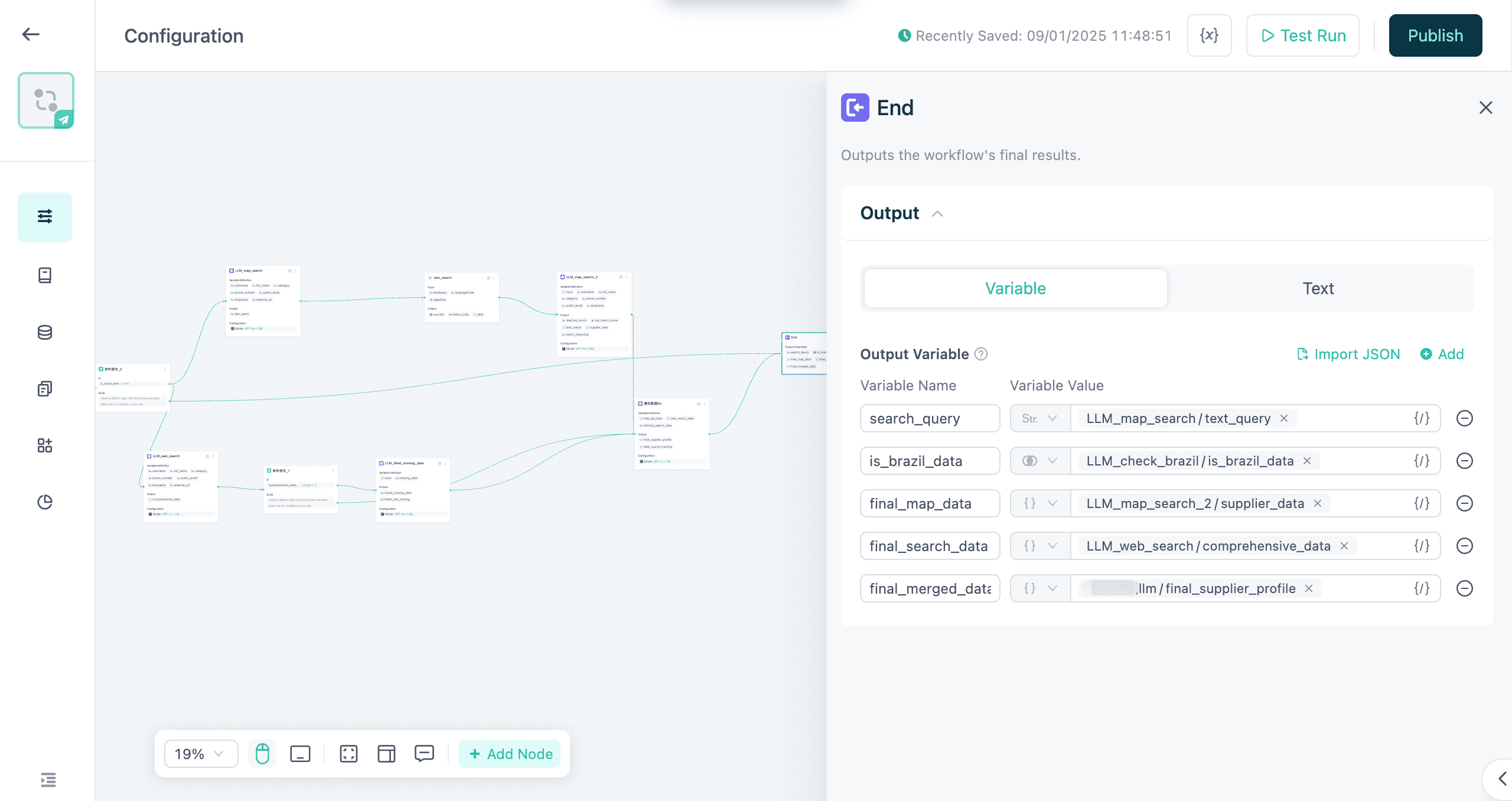
Verdict: n8n is great at classic workflow automation across apps, while GPTBots is built to deliver next-generation AI Agents with rich cognitive capabilities.
2. Workflow Automation vs. AI Agent Capabilities
n8n provides advanced workflow automation with extensive trigger options (manual, scheduled, webhooks, application events) and sophisticated error handling with fallback logic. This makes it suitable for mission-critical business process orchestration.
GPTBots focuses on AI agent capabilities with advanced features, such as multi-modal input/output (text/voice/image/file), long/short-term memory, user attribute management, and intelligent human-agent handoff. This makes it ideal for conversational AI and intelligent customer service applications.
Verdict: n8n is stronger for general workflow automation, while GPTBots is superior for creating intelligent and context-aware AI agents.
3. Technical Complexity & Target Users
n8n is a low-code platform best suited for developers, automation engineers, and IT professionals who need fine-grained control over workflow logic and have technical expertise for handling JSON paths, API authentication, and custom JavaScript/Python code.
GPTBots is a true no-code platform designed for customer service, marketing, sales, and other non-technical/product teams who need to build and deploy AI applications quickly through an intuitive drag-and-drop interface and templates. It also provides experts' support in building AI agents.
Verdict: n8n requires technical expertise for advanced use, while GPTBots enables business users to build sophisticated AI applications independently.
4. Deployment Options & Enterprise Readiness
n8n offers flexible deployment, including open-source self-hosted options (free but with high maintenance costs), cloud SaaS, and enterprise plans. All this provides infrastructure control but requires significant technical resources to maintain and scale.
GPTBots provides commercial deployment options, including regional SaaS (China/global) and private cloud editions with professional SLA-backed support, implementation services, and ongoing operational maintenance. All this reduces internal resource requirements.
Verdict: n8n offers more deployment flexibility but higher maintenance overhead, while GPTBots provides enterprise-ready solutions with comprehensive support.
5. Integration Capabilities & Ecosystem
n8n offers broader application integration with native support for 400+ applications, including CRM, ERP, databases, and marketing tools. In addition, you get the ability to connect to any API-enabled tool through HTTP requests and custom nodes.
GPTBots offers deeper AI-specific integrations with customer service platforms, knowledge bases, and LLM APIs. These include WhatsApp, Slack, Discord, Zapier, LINE, website, Messenger, Telegram, and more.
Verdict: n8n wins for general application connectivity, but GPTBots provides more specialized AI and customer service integrations.
6. Template Applications
n8n delivers an extensive range of workflow templates that are built by the efforts of the internal team and the community. They are circulated on GitHub, community forums, and other websites.
GPTBots also offer templates to build various AI agents, including customer support, lead generation, SEO writers, data analysts, and more. However, the templates are few and rely on official construction and provision.
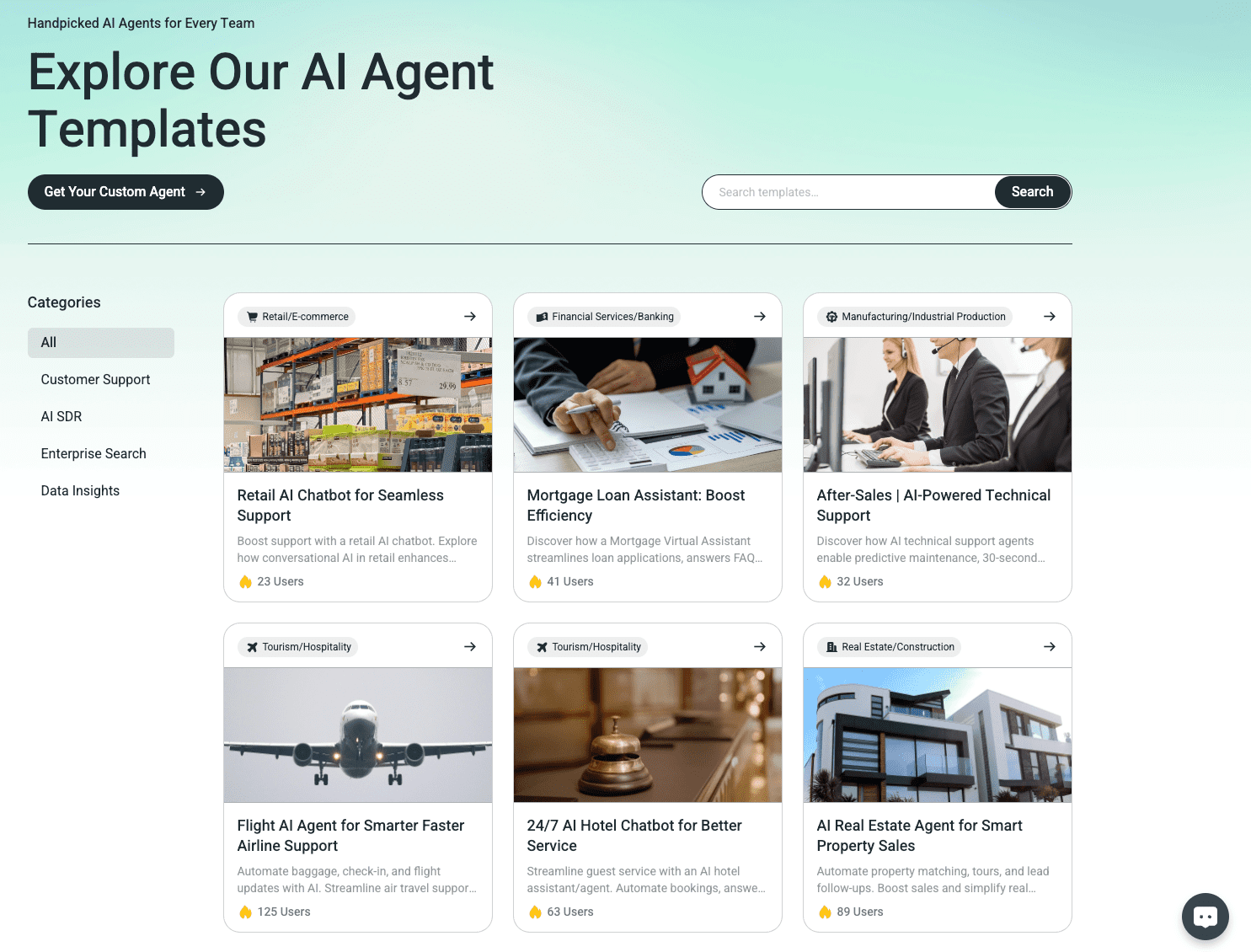
Verdict: n8n leads with comprehensive and community-powered template variety and depth, while GPTBots provides professionally curated AI agent templates optimized for specific enterprise use cases.
7. Enterprise Data Handling & Security
n8n enables easier read/write access to business data via connectors to Slack, Jira, Teams, and CRM systems, with partial role-based permission support.
GPTBots supports advanced data isolation and encryption. It also offers comprehensive permission management, which covers agent usage, knowledge base access, and enterprise compliance standards.
Verdict: n8n offers a good baseline for data integration, while GPTBots provides stronger and more specialized data governance and enterprise-grade security controls.
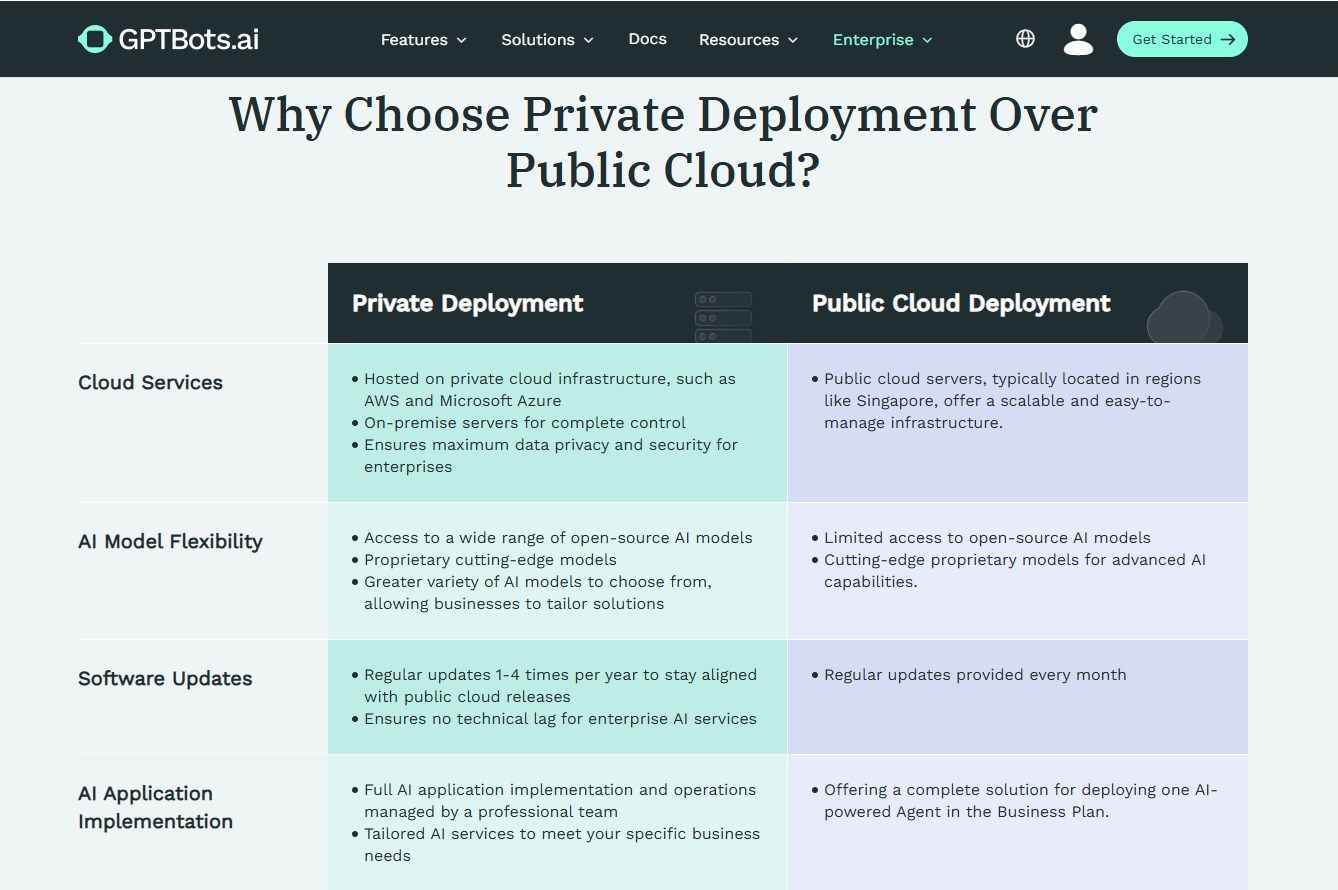
8. Support, Maintenance & Commercial Services
n8n provides a strong open-source community and commercial support plans with optional SLA for enterprise customers.
GPTBots delivers full-service support, including AI agent training, optimization, and operational maintenance. All that is packaged in comprehensive enterprise subscriptions.
Verdict: GPTBots offers an end-to-end managed AI agent service beyond basic workflow automation support available from n8n.
Comparison Chart Between Dify vs n8n vs GPTBots
| Feature / Aspect | Dify | n8n | GPTBots |
|---|---|---|---|
| Platform Type | AI-native, no-code AI agent platform | Open-source, low-code workflow automation | Enterprise-grade, no-code AI agent platform |
| Primary Audience | AI developers and startup teams | Developers, IT teams | Business users, product teams, enterprises |
| Core Focus | AI agent creation, RAG, prompt orchestration | Wide app integration & automation workflows | Advanced AI agents with RAG, context engineering |
| Ease of Use | No-code, moderate learning curve | Low-code, needs technical expertise | Intuitive no-code with drag-and-drop UI |
| Workflow Triggers | Manual and user messages | Manual, webhook, schedules, app events | Manual, user messages |
| Integration Ecosystem | AI-focused integrations (knowledge bases, LLM APIs) | 400+ app connections (CRM, ERP, databases) | Specialized AI/customer service platform integrations |
| AI Capabilities | Native multi-LLM, RAG, evaluation tools | Third-party LLM nodes | Native multi-LLM, RAG, long-short term memory |
| Customization | Moderate (visual, DSL, Python support) | Highly flexible with JavaScript/Python code | Limited low-code, focused on no-code AI templates |
| Deployment Options | Cloud SaaS focused, limited self-host options | Self-hosted, cloud SaaS | SaaS (China/Global), private cloud with SLA |
| Open Source | Limited, Fair-Code License | Fully open-source with community support | Proprietary commercial platform |
| Community & Ecosystem | Growing developer ecosystem | Large active open-source community | Smaller but enterprise-focused ecosystem |
| Template Availability | Few official templates, limited community | Extensive official + community templates | Curated professional AI agent templates |
| Error Handling | Basic error handling | Advanced fallback and debugging | Basic, requires manual intervention |
| Enterprise Security | Moderate; compliance depends on deployment | Partial role-based access, containerization options | Advanced role, data isolation, encryption controls |
| Data Handling | Supports multiple knowledge sources | Integrates Slack, Jira, CRM for deep data access | Strong data governance and knowledge base permission |
| Multi-Modal Support | Yes (text, voice, image, file) | Limited (depends on integrations) | Yes, with native audio-video and file handling |
| Agent Types | Single LLM agents, Chatflow, MultiAgent | Workflow-driven agents, FlowAgents | Simple Agents, Chatflow, MultiAgent with autonomous features |
| Long/Short Term Memory | Short-term mainly | Needs manual state handling | Built-in long & short-term memory |
| User & Behavior Analytics | Limited | Basic execution logs, usage stats via BI tools | Comprehensive user, behavior, performance analytics |
| Commercial Support & SLA | Professional support limited | Enterprise SLA plans available | Full end-to-end AI agent training, optimization, SLA |
| Low-Code Capabilities | Python supported, JS planned | JS & Python scripting | Python components, no JS planned |
| Workflow Visual Editor | Yes | Yes | Yes |
| Knowledge Management | Supports text, tables, Q&A with RAG | Extensive API-based knowledge integration | RAG-enabled with unlimited knowledge documents |
| AI API Support | Yes (OpenAI, Anthropic, others) | Yes (OpenAI, Cohere, custom APIs) | Yes, wide AI model support (many commercial LLMs) |
| Operator & Administration | Limited | Partial roles & permissions in enterprise edition | Full functional role-based controls |
| Pricing Model | Subscription SaaS, cloud-focused | Free self-hosted + paid cloud SaaS | Subscription, enterprise tiered plans |
Use Cases of Dify, n8n, and GPTBots
What enterprises are focusing on in 2025 and the upcoming years is AI-powered automation to transform their business processes with intelligent applications.
Dify, n8n, and GPTBots enable these innovations but cater to different needs through unique capabilities. So, let's now look at the use cases of Dify vs n8n vs GPTBots:
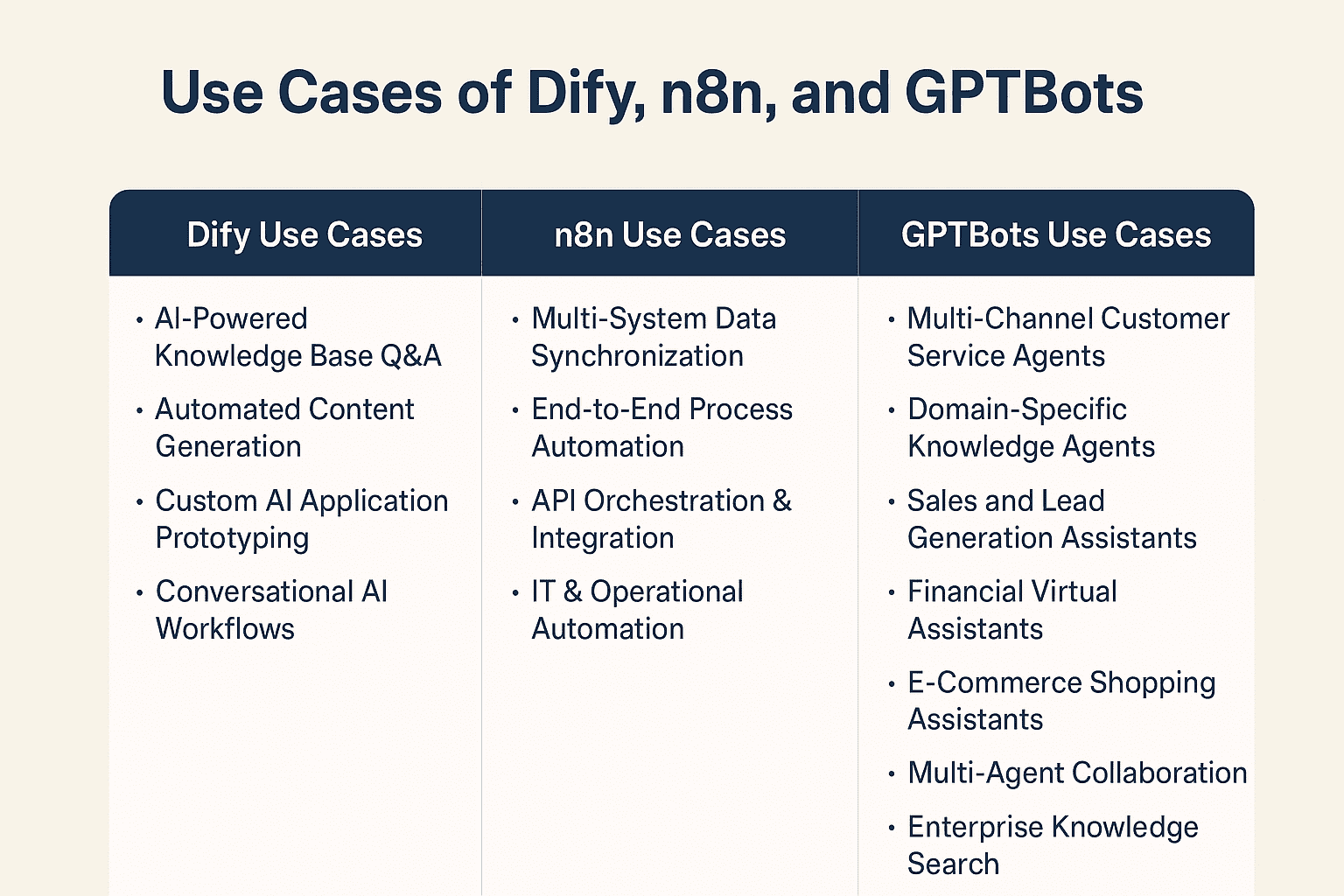
Dify Use Cases
-
AI-Powered Knowledge Base Q&A:
Building accurate and context-aware assistants using RAG and proprietary documents. -
Automated Content Generation:
Creating social media content and emails with a consistent brand voice. -
Custom AI Application Prototyping:
Developing and testing generative AI tools without extensive coding. -
Conversational AI Workflows:
Designing and deploying chatbots for customer or internal employee support.
n8n Use Cases
-
Multi-System Data Synchronization:
Automating data flow between CRM, ERP, marketing, and database systems. -
End-to-End Process Automation:
Orchestrating workflows for onboarding, ticketing, invoicing, and reporting. -
API Orchestration & Integration:
Connecting diverse services for social media or data processing pipelines. -
IT & Operational Automation:
Monitoring with alerting and resource management across tools and communication platforms.
GPTBots Use Cases
-
Multi-Channel Customer Service Agents:
Handling complex, context-aware inquiries with multi-modal support and smooth human handoff. -
Domain-Specific Knowledge Agents:
Building precise assistants augmented by enterprise content and RAG. -
Sales and Lead Generation Assistants:
Automating interactive customer engagement and lead qualification. -
Financial Virtual Assistants:
Providing banking support, fraud detection, and personalized financial advice. -
Healthcare Symptom Checkers:
Delivering preliminary diagnoses and medical information retrieval. -
E-Commerce Shopping Assistants:
Offering product recommendations and personalized shopping experiences. -
Multi-Agent Collaboration:
Coordinating AI agents autonomously for complex enterprise tasks. -
Enterprise Knowledge Search:
Enabling natural language querying of internal documents with security controls. -
Data Analytics:
Engaging with enterprise data through natural language conversation to extract useful insights.
Collaboration Scenarios: Dify + n8n + GPTBots
It is not necessary to use Dify, n8n, and GPTBots separately. Integrating these platforms creates a powerful ecosystem where each handles its specialized function.
Use Case 1: Intelligent Customer Service Ecosystem
- GPTBots acts as the multi-channel conversational front-end to understand customer intent and manage dialogues.
- Dify powers the knowledge backend using RAG to provide accurate answers from product catalogs and policy documents.
- n8n orchestrates the real-time backend, connecting to order management, CRM, and inventory systems to fetch live data.
Use Case 2: Automated Market Intelligence Pipeline
- n8n triggers data collection from news APIs and financial feeds upon detecting significant market events.
- Dify processes and analyzes the information to generate personalized insights and reports using AI workflows.
- GPTBots delivers the finalized intelligence to clients via their preferred portals, emails, or notifications.
Why Choose GPTBots as the Ultimate Choice for Building Agents?
From our thorough GPTBots vs n8n vs Dify comparison 2025, we can acknowledge that each of them is top-notch in its own domain. They have unique strengths and use cases to empower enterprises on their AI automation journey.
If we look from a broader perspective, GPTBots stands out as the ultimate choice when it comes to building powerful and intelligent AI agents designed for real-world enterprise applications.

GPTBots is a purpose-built enterprise AI agents platform with integrated advanced AI engineering capabilities at its core, including retrieval-augmented generation (RAG), context engineering, multi-LLM collaboration, and long-term memory management. This ensures a level of agent intelligence, contextual awareness, and scalability unmatched by its competitors.
If we sum up the key reasons to choose GPTBots, they would include:
-
Native AI Agent Architecture:
Built from the ground up with advanced AI features that enable agents to handle complex and multi-turn interactions. -
User-Friendly No-Code Platform & Expert Guidance:
Enables business users and citizen developers to quickly build and deploy intelligent AI applications without programming expertise. They also get expert guidance for smooth and efficient development + deployment of AI agents. -
Multi-LLM Collaboration:
Integrates leading models like DeepSeek R1, OpenAI GPT, Google Gemini, and others to provide flexibility for complex reasoning, cost efficiency, and personalized performance. -
Industry-Specific Solutions:
Delivers customized applications for healthcare, banking, e-commerce, and more. It automates up to 90% of customer inquiries and reduces operational costs by 70%. -
Robust Enterprise Security and Compliance:
Comprehensive role-based permission controls, data isolation, encrypted storage, and knowledge base access management ensure enterprise-grade data governance. -
Comprehensive Ecosystem Integration:
Deeply integrated with customer service platforms, knowledge bases, and popular messaging tools such as Slack, WhatsApp, and Telegram for a wide deployment reach. -
End-to-End Managed Services:
Provides professional AI agent training, optimization, and SLA-backed operational maintenance to guarantee reliability and continual improvement.
GPTBots' ability to combine advanced AI capabilities with ease of use and scalability makes it the ultimate choice for businesses aiming to drive innovation and enhance customer experiences, while maintaining a competitive edge in the AI era.
Conclusion
Choosing between Dify vs n8n vs GPTBots depends on your specific automation and AI goals. Dify is best in AI app development, n8n in workflow automation, and GPTBots in building enterprise AI agents with advanced RAG and multi-LLM support. Now, it is your call on which platform aligns with your needs.
For businesses prioritizing secure, scalable, and production-ready AI agent deployment, GPTBots is the definitive choice. So, think no more and start building your intelligent agents today with GPTBots to unlock the future of enterprise automation.
Get a Custom Demo


